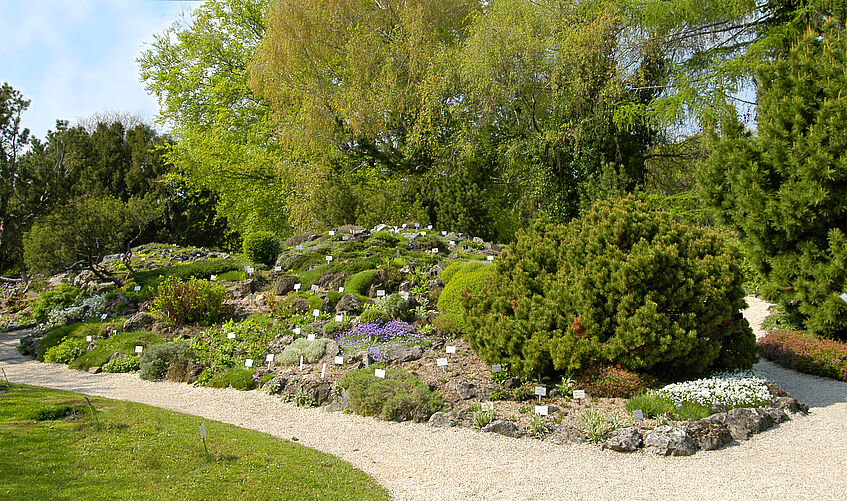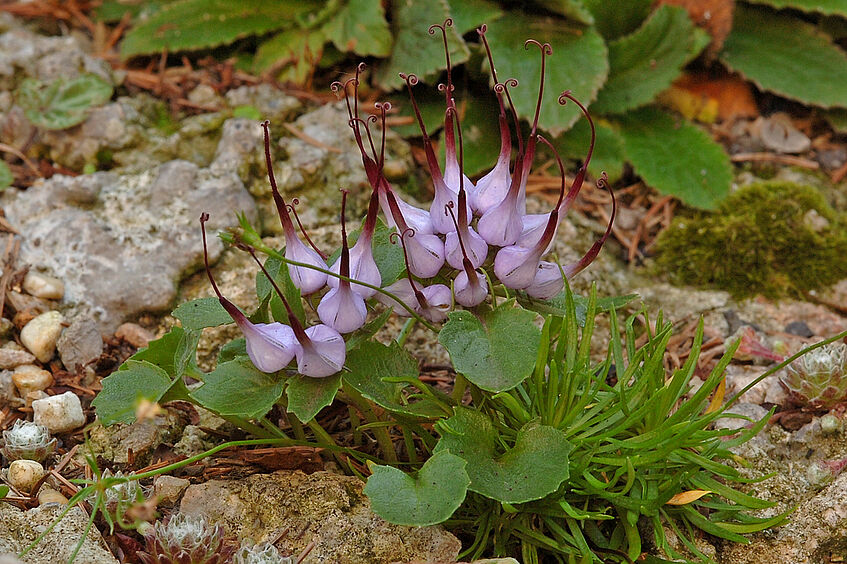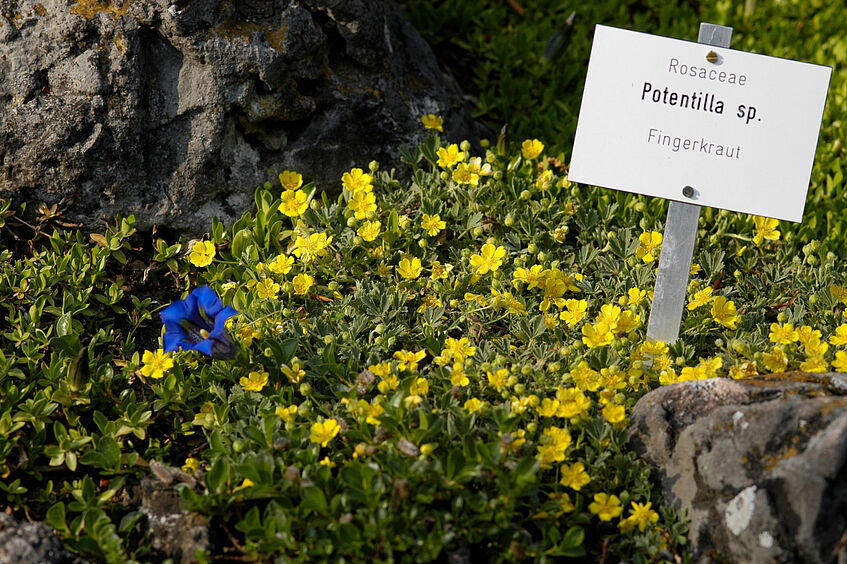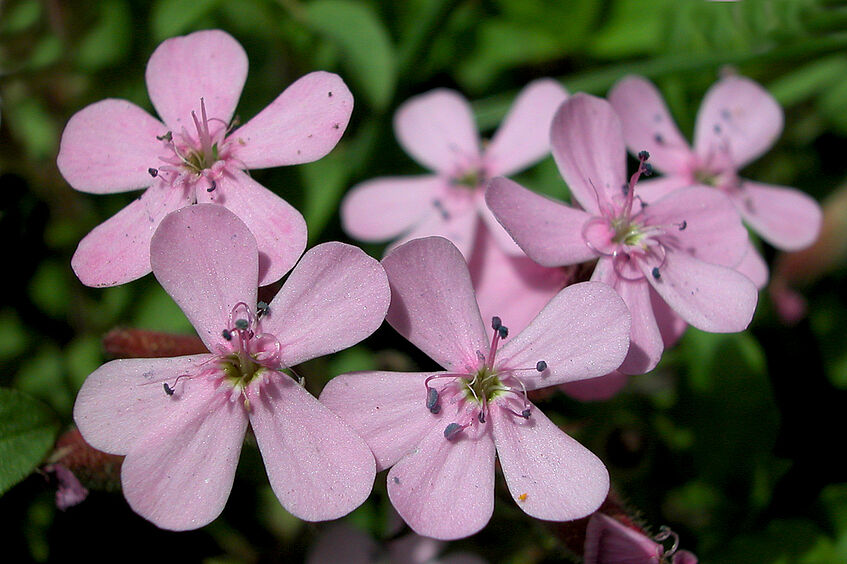Alpine Plants

Alpinum © BGUW_R. Hromniak

Physoplexis comosa – Schopfteufelskralle © BGUW_R. Hromniak

Potentilla © BGUW_R. Hromniak

Saponaria ocymoides – Seifenkraut © BGUW_R. Hromniak
The "Alpinum" of the Botanical Garden of the University Vienna has been at its present location since 1930. About 800 plant species are cultivated here on an area of almost 1,000 m2. The main themes of this collection are the soil requirements (limestone/silicate) and geographical distributions of the species. Montane, subalpine and alpine plants of the Alps and other mountains of Europe and Asia are the focus of the collection. When new plants are added, important records such as their original locality are gathered in a database.
The alpine garden also contains plants used in research in the Faculty Centre of Biodiversity of the University of Vienna. These include the following groups:
Feathered pinks (Dianthus section Plumarius): Species relationships within the genus Dianthus are currently being investigated on a worldwide basis. The Department of Systematic and Evolutionary Botany is carrying out the work, and there is a scientific collection of indigenous alpine and montane species in the reserve garden of the Botanical Garden of the University Vienna and in the Alpinum.
Androsace vitaliana (sometimes called "golden primrose"): The conspicuously fragmented distribution area of this species raises the question whether its occurrence today derives from the break-up of an originally continuous area or from colonization of remote mountains after long distance dispersal. This problem is now being clarified with molecular data as part of a research project running at the Department of Biogeography.
Glaciation: Researchers have succeeded in identifying refuges of alpine plants during ice ages with the aid of genetic analysis. Reconstruction of distribution histories shows that the diversity of species and their genetic variation in certain areas has varied strongly over time. Scientists at the Faculty Centre of Biodiversity are actively contributing to projects dedicated to explaining these phenomena.
